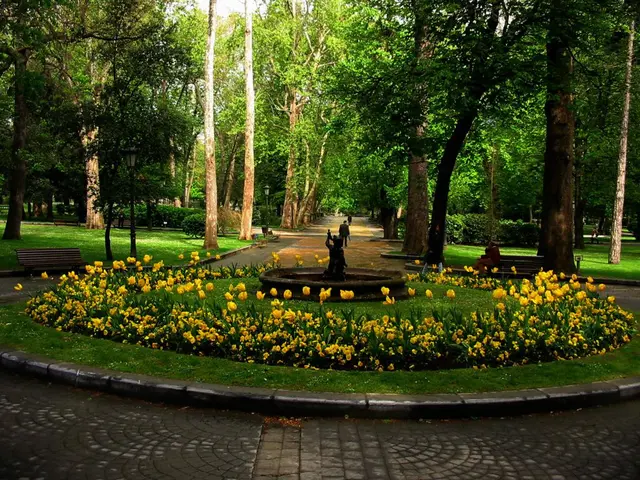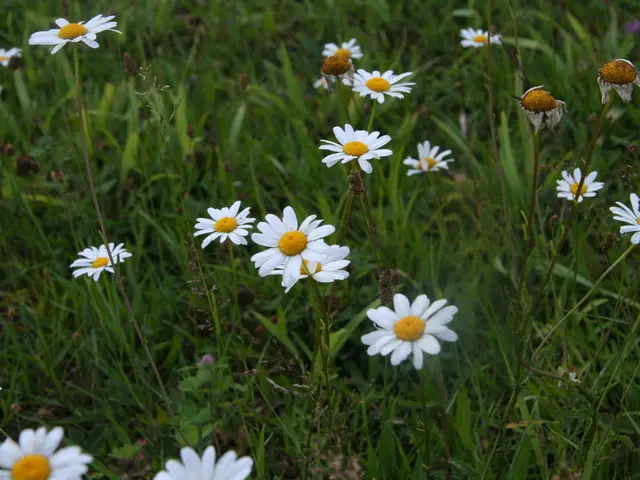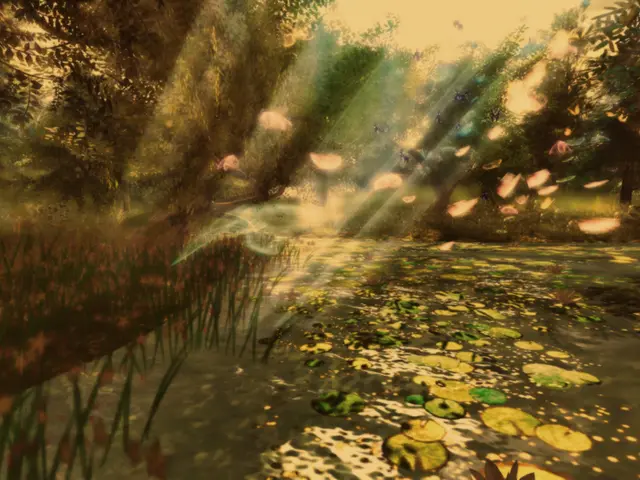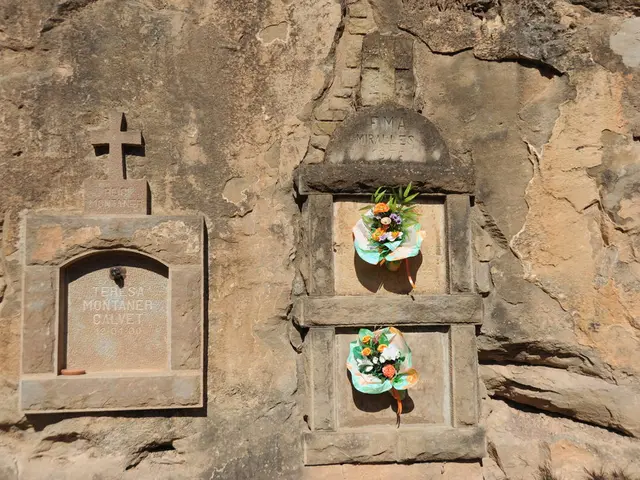Guide for cultivating jasmine to create a stunning, aromatic wall of breathtaking blossoms
Wow, cultivating Jasmine? That's a sweet deal indeed! Here's a step-by-step guide on how to turn your outdoor space into a heavenly scented wonderland just like a seasoned gardener.
Grab your gardening gear, and let's jump right in!
The Lowdown on Jasmine
Jasmine, one of the stankiest aromatic plants, isn't just a favorite among perfume enthusiasts but also gardeners who yearn for a dash of romance in their outdoor escapades. Surprisingly resilient and easy to grow, it's the perfect addition to gardens of all shapes and sizes.
Types of Jasmine
In the UK, you'll primarily find two main types of Jasmine—Summer Jasmine (Jasminum officinale) and Winter Jasmine (Jasminum nudiflorum).
- Summer Jasmine, a hardy, deciduous climber with highly fragrant white flowers from June to September, is ideal for outdoor walls and fences.
- Winter Jasmine, while unscented, adds a pop of bright yellow with its flowers over the darker winter months.
Pick your poison based on scent preference and the season you'd like to have your garden emanating with an exhilarating aroma.
Grow Your Jasmine like a Pro
Picking Your Moment
You can snag a jasmine plant all year round, but plant either Summer or Winter Jasmine in the spring or autumn for the best results. If you're deadset on planting at a random time, the jasmine won't judge.
Finding the Perfect Location
Three rules of thumb for growing Jasmine like a pro:
- The sunnier, the merrier! Choose a warm, sheltered spot, preferably south or west-facing, for optimal flowering.
- Opt for a spot in full sun or partial shade, and avoid cold winds and shady corners.
- Position your Jasmine against a south or west-facing wall for optimal growth.
Prepping the Soil
Mix in plenty of well-rotted organic matter or compost before adding your Jasmine. The aim is to create a mix for your jasmine that's well-draining, fertile, and rich. If you're dealing with compacted soil or poor drainage, add a bit of grit.
Time to Plant
Dig a hole twice the size of the root ball before placing your jasmine plant in at the same depth as it was in its pot. Give it a good ol' drink to help its roots settle in. Provide support for climbing by installing a trellis, fence, or arbor.
Watering and Feeding
Water your jasmine regularly during dry spells throughout the first year, especially container-grown plants. After establishing the plant in the ground, it will seldom need extra watering, but keep a close eye on it during hot summer months.
Fertilize with a balanced liquid fertilizer every couple of weeks during the summer to keep your jasmine feeling fabulous. Mulch in spring with compost or well-rotted manure to feed your jasmine throughout the season.
Pruning
For a beautifully tidy jasmine, prune it after flowering—that's typically late summer or autumn. Don't be shy; go ahead and snip off dead, damaged, or overcrowded stems as needed to maintain your jasmine's shape and encourage new growth for the following season.
And that's it! You're well on your way to having a garden that would make a florist green with envy.
FAQs
- Does Jasmine Grow Better in Pots or Ground?Jasmine can thrive both in pots and in the ground. A general rule of thumb: common jasmine grows best when planted directly in the ground, where its roots can spread and it has room to climb and flourish. However, container-grown plants may need more care and attention, particularly during winter months.
- Does Jasmine Come Back Every Year?Jasmine is a hardy perennial and should come back each spring, provided it's received proper care and attention during its growing season. Some more tender varieties or those grown in colder regions may require indoor protection during winter months.
Now go forth and grow that jasmine, my friend! And if you're feeling particularly daring, don't hesitate to deviate from the guide—in the world of gardening, rules are meant to be broken.
Enjoy the aromatic charm of jasmine in your own garden, boosting both its beauty and your home's allure. With a focus on health and wellness, cultivating jasmine promotes family bonding, making gardening an enriching lifestyle activity.
Surround yourself with the sweet scent of jasmine year-round by incorporating it into your home-and-garden decor. Use fresh jasmine flowers to create wonderfully scented diffusers or potpourri that complement any room within your house.
Having a well-tended, fragrant jasmine garden negates the need for artificial air fresheners, promoting a chemical-free, holistic home environment. Furthermore, the benefits of gardening extend to mental health, offering a tranquil escape and opportunities for mindfulness exercise.
Keep the beauty of jasmine alive indoors by styling your hair with fresh flower accessorizes. Incorporate jasmine blossoms into hair crowns, headbands, or small bouquets of flowers for an elegant touch at home or when spending time with loved ones.
By cultivating jasmine, you're not just creating a heavenly scented outdoor haven, but also strengthening the bonds within your family, embracing a sustainable lifestyle, and evoking the enchantment of this aromatic flower in your everyday life.








